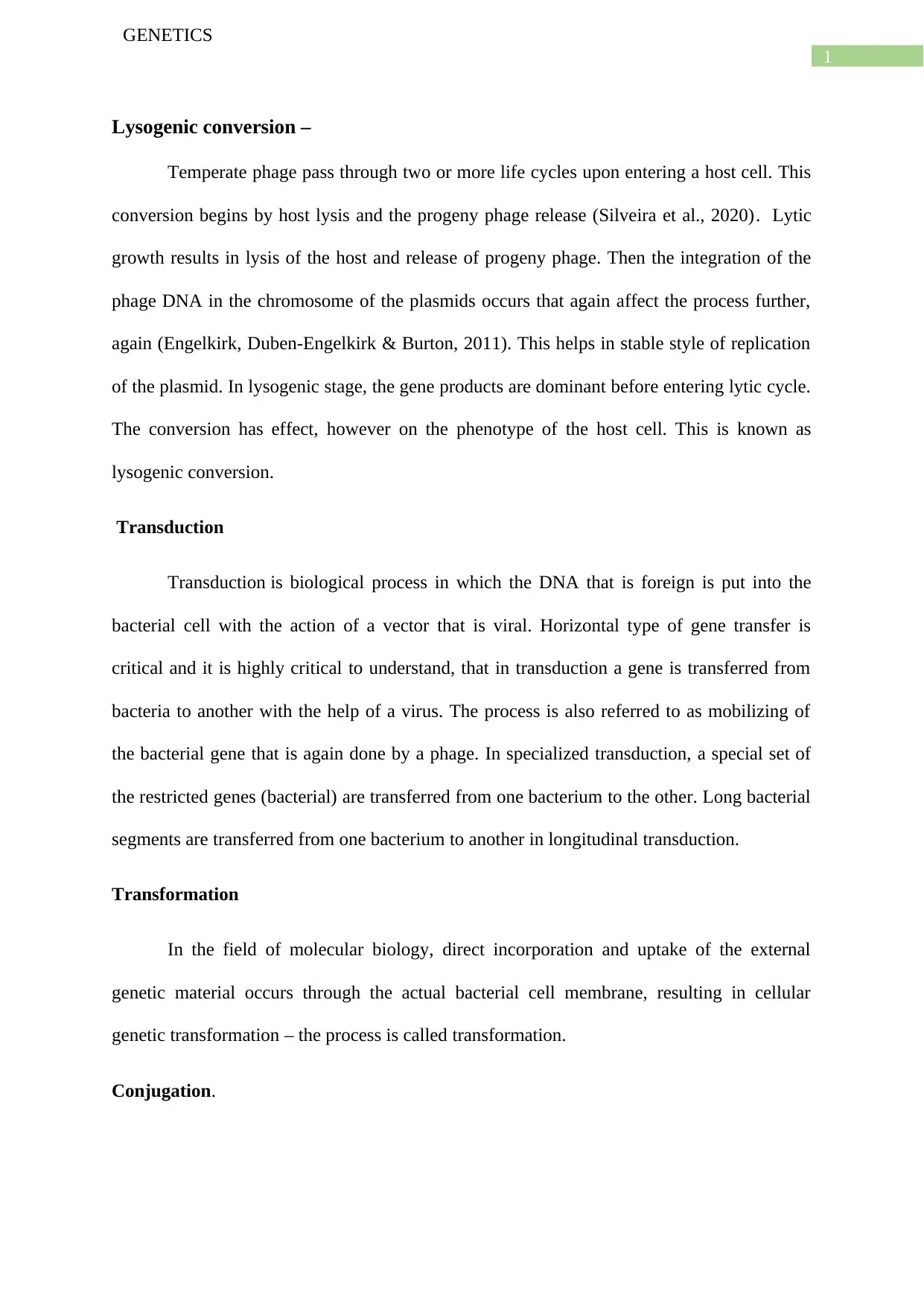Bacterial Gene Transfer: A Genetics Assignment Overview
VerifiedAdded on 2022/08/13
|4
|432
|23
Homework Assignment
AI Summary
This assignment delves into the fascinating world of bacterial gene transfer. It explores various mechanisms, including lysogenic conversion, which involves phage integration and its subsequent effects on the host cell. The assignment also covers transduction, where viral vectors facilitate the transfer of genetic material between bacteria, highlighting both specialized and longitudinal transduction processes. Furthermore, the assignment examines transformation, the direct uptake of external genetic material by bacterial cells, and conjugation, the direct transfer of genetic material between bacteria through cell-to-cell contact. The assignment highlights the importance of these processes in bacterial genetics and their implications. References include Engelkirk, Duben-Engelkirk & Burton (2011) and Silveira et al. (2020).
1 out of 4





![[object Object]](/_next/static/media/star-bottom.7253800d.svg)